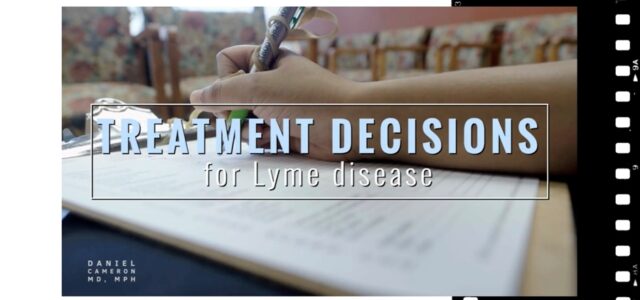Call for your appointment today 914-666-4665 | Mt. Kisco, New York

The Infectious Disease Society of America (IDSA) and the International Lyme and Associated Diseases Society (ILADS) have each published their own set of evidence-based treatment guidelines. IDSA guidelines recommend a short course of antibiotics, typically 14 to 30 days. IDSA argues that the Borrelia burgdorferi bacteria does not persist in a patient beyond this timeframe and that lingering symptoms are the result of an ongoing immune response and not the result of an active infection. It also cites scientific evidence claiming treatments beyond 30 days are ineffective, unnecessary, and even dangerous. So, what are treatments for lyme disease?
IDSA physicians will stop treatment after 30 days even if symptoms remain. However, there is an additional 30 days of treatment recommended for patients with Lyme arthritis.
On the contrary, ILADS offers its own scientific data to show that a longer course of antibiotics is required to eradicate the bacteria. ILADS recognizes that a month of treatment may be sufficient for patients in the acute stage of Lyme disease but in cases where the spirochete has disseminated and the disease has advanced, a 30-day treatment regimen is inadequate.
[bctt tweet=”Treatments vary for Lyme disease. There is no one-size-fits-all treatment approach. ” username=”DrDanielCameron”]
ILADS guidelines recommend additional antibiotics until a patient’s symptoms have been resolved. Treating Lyme disease and its advanced stage can be complicated based on the complexity of the organism itself, the differences in each patient’s immune system, the length of time infected, and the possible presence of other co-infections transmitted by the same tick. However, there are several choices in treating Lyme disease which include oral, intravenous, and intramuscular antibiotic options.
Other options may include, sequential antibiotic therapy, higher doses of antibiotics, taking antibiotics for a longer period of time, a combination of antibiotics, retreatment, as well as, diagnosing and treating co-infections. Some specific antibiotics used in treating Lyme disease are Doxycycline, Minocycline, Amoxicillin, Cefuroxime, Azithromycin, and Clarithromycin.
READ MORE: Elderly Lyme disease patients more likely to have unfavorable treatment outcome
There are additional actions that may also aid in treating Lyme disease such as avoiding alcohol, simple and processed sugars, exercising is tolerated, counseling for Jarish herxheimer reaction, managing symptoms, monitoring, and reducing the risk of an adverse event, and reducing stress.
However, there is a chance of side effects such as Clostridium difficile-associated diarrhea. It is important to note the possible benefit of taking probiotics when treating Lyme disease. In one study, probiotic use significantly reduced the risk of developing C. diff by 60.5%. Other steps include measures of blood counts, chemistries, and liver function tests.
What are treatments for lyme disease? In some cases, a specialist might be advised. Remember choosing a treatment option should be a shared decision between physicians and their patients; also there should be regular follow-up visits to reassess a patient’s response to treatment.
Related Articles:
Treatment varies for bells palsy in children with Lyme disease
Tick bite prevention methods vary between socio-economic levels
Permethrin-treated clothing causes “hot foot” effect in ticks
References:
- Bron GM, Fernandez MDP, Larson SR, et al. Context matters: Contrasting behavioral and residential risk factors for Lyme disease between high-incidence states in the Northeastern and Midwestern United States. Ticks Tick Borne Dis. 2020;11(6):101515.




After I got a tick bite I had blood work done in 2020 and told me I was all set with good results of Lyme disease. I was tired and and in pain for awhile on and off , so covid came and I waited till 2022 to have the test again and it came back with a positive result of Lyme and I got the red bullseye’s all over, now I’m waiting to get in for my doctor appointment. They missed some of the results in 2020 ,it showed present for Lyme
I typically look again at tick borne illnesses even the symptoms are initially dismissed. I would also advise my patients to be reevaluated if they have a new rash. All the best.
Positive for Lyme disease